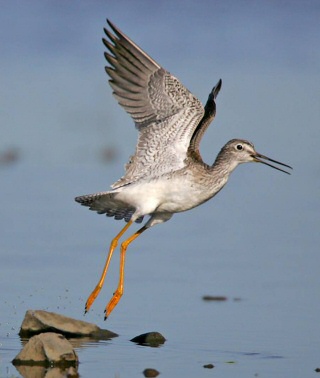Canton Road, Canton, NJ
Phone: (609) 628-2436
www.nj.gov/dep/fgw/tour_capemay-delbay.htm#stow
NJ Department of Environmental Protection
Take Abbotts Farm Rd. back out
to CR 624/Fort Elfsborg Rd. and turn Right.
Follow to dead end and turn Right onto
Salem-Hancock’s Bridge Rd. This turns
into Locust Island Rd. once you cross over Alloways Creek. Drive past the Hancock House (stop if you like), and after 1.6 miles turn Left at the end of the road toward Hancock’s Bridge-Harmersville Rd. Bear Right at the split onto
CR 658/Hancock’s Bridge-Harmersville Rd.
After 0.7 miles, turn Right onto CR 623/ Harmersville-Canton Rd. After 3.2 miles,
just after you pass the school on the Right,
turn Right at the sign for the Stow Creek
Viewing Platform. Map
The thick growth of young trees and brush to the left of the information board is crisscrossed with wide clear paths through some interesting habitat. A variety of birds and small animals can be found here. A quiet walk may produce a muskrat feeding on vegetation at the edge of the path. Be alert for ticks from spring until the first frost.
 |
| Greater Yellowlegs | Kevin Karlson |
| |
| | Bald Eagles are now more numerous thanks to the efforts of the New Jersey Department of Environmental Protection’s Division of Fish and Wildlife Bald Eagle Restoration Program. Records indicate this pair has nested along the creek for 15 years, and
during that time they have successfully raised over 30 offspring. A detailed history of the pair is available on the glass-enclosed information board located on the path about one hundred yards from the parking area. The viewing platform, approximately 20 yards to the right of the
information board and up a slight rise, was built under shade trees on a low bluff overlooking the expansive salt marsh. The original eagle nest, last used by the pair in 2004, is visible in a large sycamore tree on the far side of Stow Creek.
Eagles still nest in the vicinity. You may be rewarded with spectacular views if you spend some time on the platform watching the activity in the marsh and the sky above. In spring and summer, the marsh is alive with birds, animals, reptiles and insects. Northern Harrier, egret and Red-tailed Hawk are just a few of the large birds in the area, in addition to the Bald Eagles, which are likely to appear in the sky out of nowhere, Marsh Wren, Seaside Sparrow and Red-winged Blackbird also frequent this spot.
Small birds of the marshlands have departed for warmer latitudes, leaving the marsh to hardier species. Bald Eagles, both year-round residents and visiting migrants, hunt for fish on Stow Creek. Northern Harrier, Red-tailed Hawk, an occasional Rough-legged Hawk and Great Blue Heron rough out the cold weather. Great Horned Owl call in the evening. January is nesting season for these owls; the Bald Eagles nest shortly thereafter in February.
The marsh comes alive with song — at night from frogs and toads while birds begin their serenades before dawn and continue through the morning hours. One can often see Bald Eagles hunting along the creek for fish — for themselves and to feed their young. Turtles and
salamanders enjoy the warm rays of the sun; muskrat, white-tailed deer, cottontail rabbits and other small animals forage for food in the marsh and in the fields across from and surrounding the platform.
While songbirds nest and are difficult to see in the dense foliage, dragonflies abound. Dragonflies, birds and reptiles feast on the
abundant insects and biting flies, which are a nemesis for humans. Long sleeved shirts (despite the temperature) and insect repellent are a must here. At the same time, patient observation along the ground at the edge of the path may be rewarded with great looks at salamanders and a wide variety of turtles.
Cool, refreshing winds signal that migration is well under way. Scan the creek for Green and Blue-winged Teal, Northern Pintail, American Black Duck, Mallard and Gadwall. Thousands of Canada and Snow Geese may be seen in the sky. Migrating raptors move south overhead in a steady stream. The fall colors create a beautiful tapestry against which animals, birds, reptiles and even insects prepare for winter.
|